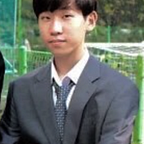Our War Against Cancer
Can we put an end to cancer once and for all?
Over the last century, the world’s innovators and thinkers have been able to put a man on the moon, create self-driving cars, and invent virtual reality glasses that can take you to a fantasy world in an instant. But, many still wonder, why have we yet to cure cancer yet?
Our war against cancer is at a much larger scale than many people understand. Cancer encompasses hundreds of diseases that consist of cancer cells that can proliferate indefinitely. Because of their evasion mechanisms, cancer cells can avoid apoptosis and growth signals, traveling through one’s blood and lymphatic system where they eventually take residence in the vital organs. To fight in the war against cancer, scientists have created treatments like immunotherapy, chemotherapy, and radiation therapy for combat. However, despite the daily use of these treatments daily, they are notorious for their painful side effects. Chemotherapy can cause hair loss, radiation therapy can cause nausea and vomiting, and immunotherapy can cause damage to the cells inside the mouth and throat. Thus, oncologists worldwide are still hunting for an answer to this grim reaper.
With the intention of curing all types of cancer, scientists have pondered about a method for controlled targeted drug delivery and release. Taking advantage of the circulatory system, a cancer drug could potentially be delivered anywhere in the body. Nanoparticles have emerged as the ideal delivery system in cancer therapies. Due to their size, nanoparticles could successfully pass through any cell membrane and overcome any biological obstacles without harming the body. Conventional chemotherapeutic agents are nonspecific and can damage healthy cells, along with those that are affected by cancer, whereas nanoparticles will be able to target and effectively focus and eliminate on only the cancerous cells. Uniquely, the application of nanotechnology in medicine can combine diagnostics and therapeutics. The particles could tag the location of the tumor as well as destroy the cells, thus eliminating the tumor.
Scientist Naomi Halas from Rice University was able to apply nanotechnology to create a particle called nanoshells. Spherical particles made of glass and covered in gold, they have the ability to capture light and convert it to heat, thus killing the cells around the particle in a noninvasive way. However, this treatment is nonspecific and can also kill the adjacent healthy cells surrounding the tumor. But compared to chemotherapy, the procedure is a much more precise method.
For the majority of the world, cancer can be perceived as a frightening and yet unpredictable occurrence. At the present moment, we have limited solutions to this problem. Yet, as Naomi Halas predicts, “one day, cancer will be trivial.”
